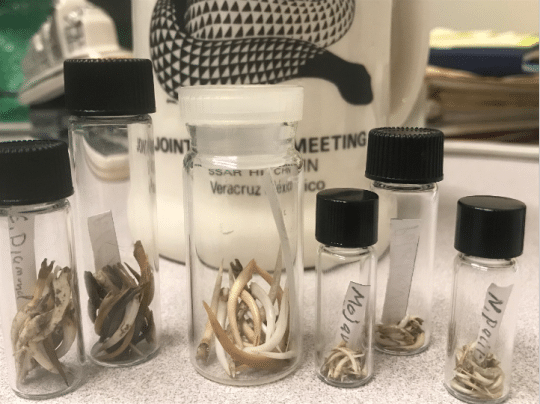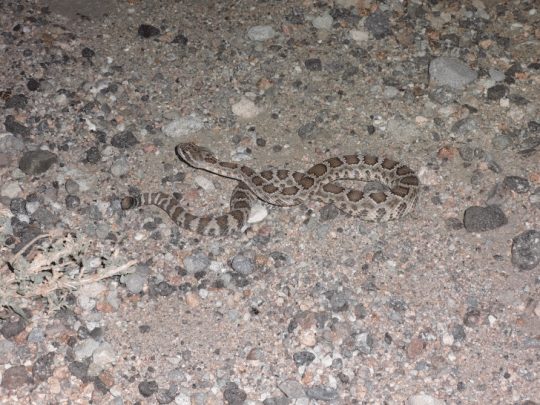When a child loses a baby tooth, the Tooth Fairy will sneakily appear a short time later to snatch that tooth up and leave behind a little treat. But what happens when vipers or other snakes with large fangs lose their teeth? I doubt the Tooth Fairy would be too keen about sneaking up on a sleeping snake…and as someone who studies and admires snakes, I would not recommend it!

I recently learned the answer to this question when I was given seven tiny vials containing dozens of fangs. These fangs came from various species of snakes in the Viperidae family, including the Mojave green rattlesnake (Crotalus scutulatus), the Northern Pacific rattlesnake (Crotalus oreganus), and the Gaboon viper (Bitis gabonica), which has the longest fangs of any snake species. The researcher who gifted us these fangs was curious about the outcome of shed snake teeth and wanted to determine how frequently snake fangs may be swallowed and passed through the snake’s digestive tract. To answer this question, he dissected and examined dried snake feces for the possible presence of shed fangs.*
As it turns out, snakes will occasionally swallow their shed fangs! Vipers are carnivores that have to hunt down and subdue live prey in order to eat and survive. Often there is a struggle between predator and prey and, in that process, a fang may be wiggled lose. Instead of falling out of a snake’s mouth, the snake may swallow the fang along with the prey item. The fang will ultimately pass through the snake’s digestive system and emerge in its feces.

As the collection manager of the Section of Amphibians and Reptiles, I oversee and care for the museum’s massively beautiful and useful collection of cool and creepy herpetofaunal specimens. These specimens include full body wet specimens preserved in alcohol, the osteology collection of bones and turtle shells, and other items such as histology slides, gut contents, and even fangs. Regardless of their preservation form, all the reptile and amphibian specimens within the collection are useful for researchers and could serve to answer future scientific questions. Although the fangs within these seven seemingly unimposing vials have already answered one burning scientific question, they will be added to the collection so see what other answers they can provide!
*Researchers take careful precautions when handling feces as it can carry disease. Do not handle feces you may see in the wild.
Stevie Kennedy-Gold is the collection manager for the Section of Amphibians and Reptiles at Carnegie Museum of Natural History. Museum employees are encouraged to blog about their unique experiences and knowledge gained from working at the museum.
